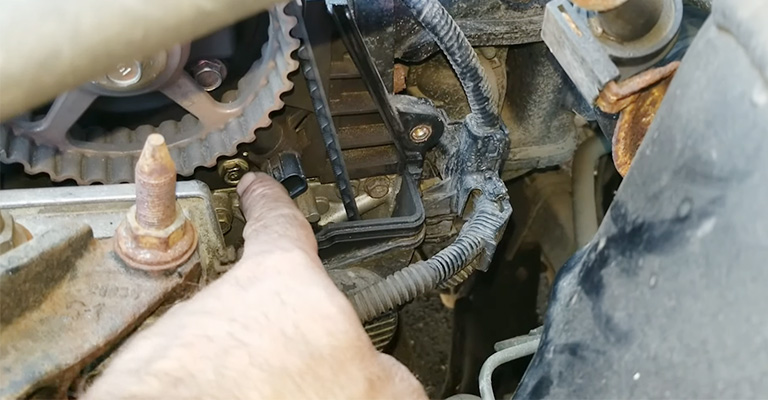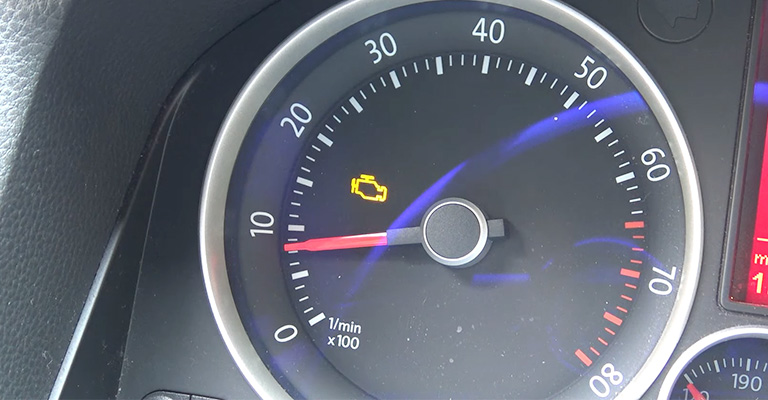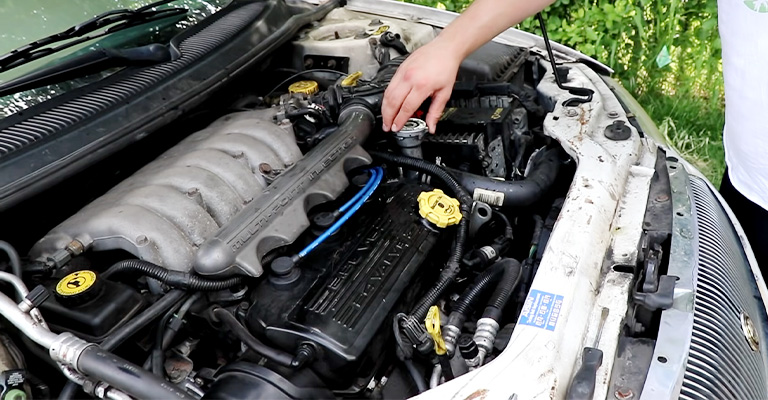The Honda Civic is a popular and reliable compact car that has been in production for over 45 years. Since its introduction in 1972, the Civic has gone through several generations, each one offering new features and improvements in performance, safety, and technology.
Despite these advancements, like any other car, the Honda Civic is not immune to mechanical problems, and the P1362 code is one of the issues that some Honda Civic owners may encounter.
Understanding the P1362 code and its potential causes is crucial in diagnosing and fixing the issue, ensuring that your Honda Civic remains in good working condition. The P1362 code is a generic powertrain code that indicates a problem with the TDC (top dead center) sensor circuit in the Honda Civic.
The TDC sensor is responsible for detecting the position of the number one cylinder in the engine, which is used by the engine control module (ECM) to determine the ignition timing.
When the ECM detects a problem with the TDC sensor circuit, it will set the P1362 code and turn on the check engine light.

What Is The Top Dead Center (TDC) Sensor All About?
There is always a top dead center in a vehicle, whether it is a single-cylinder engine or a V8 engine. As a result of this position, the engine timing is determined, and the spark plug will fire to ignite the fuel in the combustion chamber.
The top dead center occurs when the piston reaches the maximum compression stroke. By closing the intake valves and exhaust valves, the cylinder head is compressed, and the air-fuel mixture is compressed.
TDC sensors track the top-dead-center position on a cylinder, usually number one, on camshafts. Upon receiving a signal from the ignition coil, the engine control module sends a spark to the top dead center of the cylinder.
Upon forcing the piston downward, the spark ignites the fuel, and the power stroke begins. In addition to corrosion, cracks, and wear, the TDC sensor is an electrical component that is subject to failure.
It is possible that your engine will not start if that happens, as your engine control module cannot receive the right timing signal, and the spark will be sent to the wrong cylinder at the wrong time. This may result in your engine running rough or not at all.
What Common Symptoms Indicate You Need To Replace The Top Dead Center (TDC) Sensor?

An intake and exhaust valve close simultaneously when the first cylinder, usually the number one cylinder, fires.
Previously, TDC was marked as zero degrees on a harmonic balancer, which allowed mechanics to assemble engines and adjust cylinder head valves to ensure a smooth-running engine.
Engines today are built with the same precision. However, the TDC sensor tracks all cylinder firing sequences constantly. Because modern ignition systems are adapted continuously to variable driving conditions, this sensor is vital.
As long as everything goes according to plan, the TDC sensor shouldn’t need to be replaced anytime soon. However, as an electrical component, the sensor is subject to failure.
There are many issues that can cause the TDC sensor to malfunction, including wear and tear, cracks, and corrosion. A driver will be alerted to a potential problem if warning signs indicate there is a problem with this sensor.
If you notice any of these symptoms, you should contact a qualified mechanic to examine, diagnose, and possibly replace the TDC sensor.
1. Check Engine Light Comes On

Generally, a malfunctioning TDC sensor will result in the Check Engine Light appearing on the dashboard. Whenever a car is driven, the ECU monitors all sensors.
The Check Engine Light on the dashboard illuminates when the TDC sensor provides inaccurate information to the ECU.
To check for any problems, a certified mechanic will need to use a specialized computer that plugs into a port beneath the dash.
The mechanic will then be able to inspect and repair any damage to the vehicle after downloading the error codes.
There is no need to ignore the Check Engine Light. If you see this light on your dashboard, your car may have serious problems.
2. Engine Will Not Start

To ensure that all the cylinders of the internal combustion engine fire in the correct sequence and at the right time, it is essential to precisely set the ignition timing.
In the event of a malfunctioning TDC sensor, no information will be sent to the onboard computer. In order to ensure your safety, the ECU will shut down the ignition system, and the motor will not begin.
Depending on the vehicle, engines that fail to crank over or produce a spark will either not start. A mechanic can help you determine why your car won’t start, whether it’s a starting problem or not.
3. Engine Seems To Misfire Or Runs Rough
A worn or damaged TDC sensor may also cause a rough ride or a misfiring engine. TDC malfunctioning sensors usually shut the motor down immediately to avoid internal component damage.
The situation does not always present itself in this way, however. It is recommended that you stop your car somewhere safe or head home if your engine seems to be running rough or misfiring.
The next step is to contact a local mechanic who will inspect the problem at your home or office after you arrive home.
In today’s modern engines, sensors play an essential role in top dead-center measurement. Generally, after 1993, vehicles are equipped with this component.
You should have a qualified mechanic inspect your car if the Check Engine light comes on or the engine will not run properly.
How It’s Done:
- The battery of the vehicle has been disconnected
- The defective top dead-center sensor has been removed
- Installation of the new top dead-center sensor
- In addition to connecting the battery, codes are scanned and cleared from the engine.
- Road testing is performed to verify the repair and ensure the vehicle is in good working order.
Keep In Mind:
For your vehicle’s timing to be accurate, the top dead center (TDC) sensor must be installed appropriately. Regardless of whether it is installed correctly or incorrectly, your vehicle will not operate or will operate poorly.
Quick Fix:
You can reset your car’s power control module (PCM or ECU) by turning off the key, pulling the clock/backup fuse for 10 seconds, and then resetting it. Try starting the engine and seeing if the error code returns.
If not, there was an intermittent fault, and the system is okay–but check the wire connectors at the TDC1/TDC2 sensors for dirt or looseness. Replace the sensor if the code returns. Once the wiring is fine, check the sensor itself.
How Long Does a Top Dead Center (TDC) Sensor Last?
In its simplest form, the TDC sensor ensures that the reference point on the camshaft is dead center. One piston is usually responsible for this.
The engine control module (ECM) sends a signal to the TDC sensor to fire a spark at the top dead center. Once the piston is forced downward, the fuel ignites, and the power stroke begins.
Sensors are susceptible to going bad over time as they age, wear out, crack, or corrode due to harsh operating conditions.
It is possible that the spark may be sent to the wrong cylinder at the wrong time if the sensor is malfunctioning and the engine control module does not receive the correct signal. A malfunctioning engine may lead to your vehicle having issues running or simply not starting.
A bad TDC sensor can also cause your vehicle to stop starting and trigger the Check Engine Light. You should replace your top dead-center sensor if this occurs.
How Much Does It Cost?
Depending on the model, a new sensor can cost between $13 and $98. It costs between $50 and $143 on average to have this replacement performed. The part can be purchased from reputable online retailers, most automotive stores, and some retailers.
Final Words
As the TDC sensor is integral to the operation of a running engine, any issues related to its performance must be addressed as soon as possible. TDC does not present any safety concerns other than stalling that may occur.
Keeping your engine running smoothly and everything in sync requires the TDC sensor. If you begin to notice any symptoms, you should act immediately.

Leave a Reply